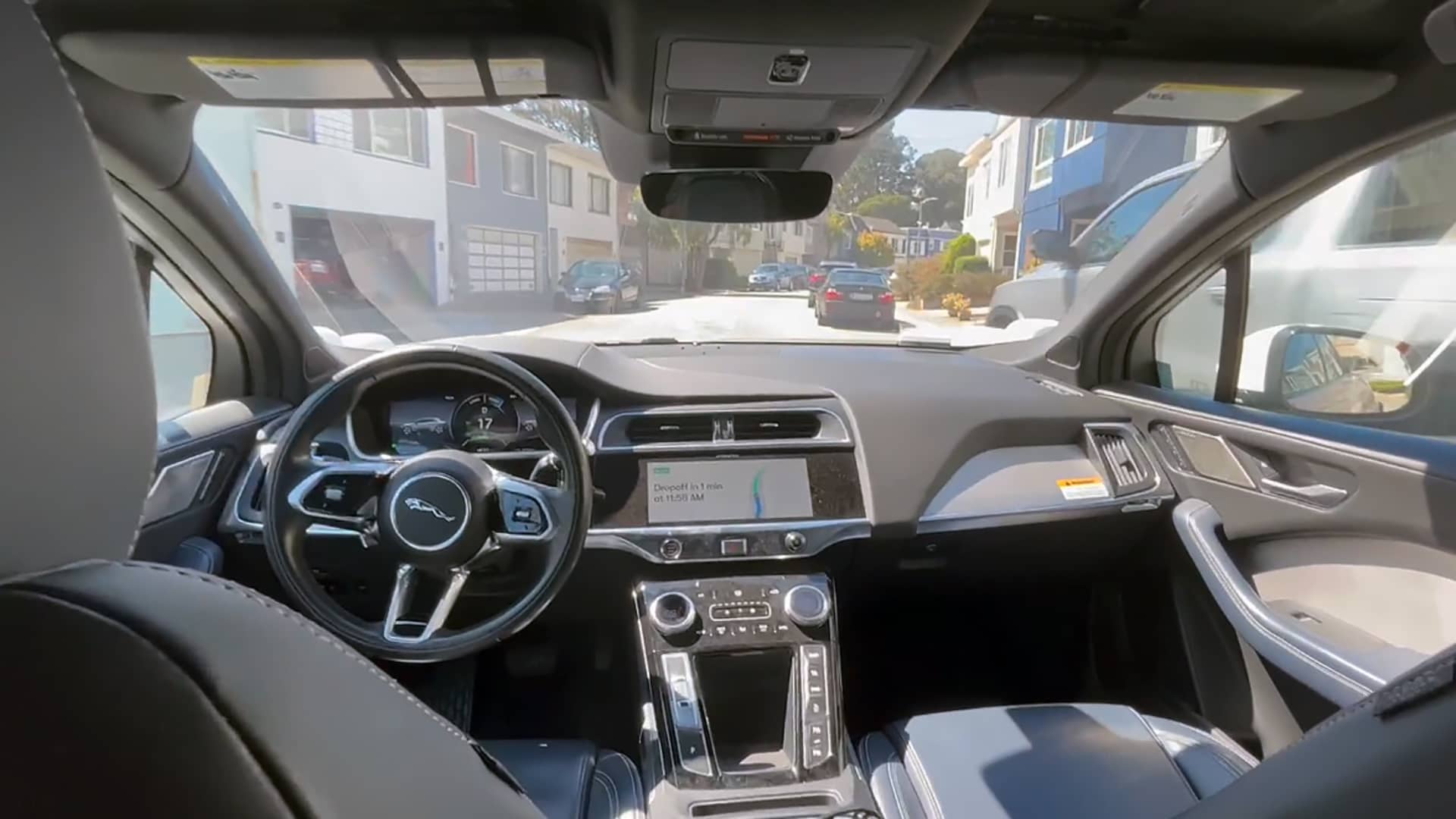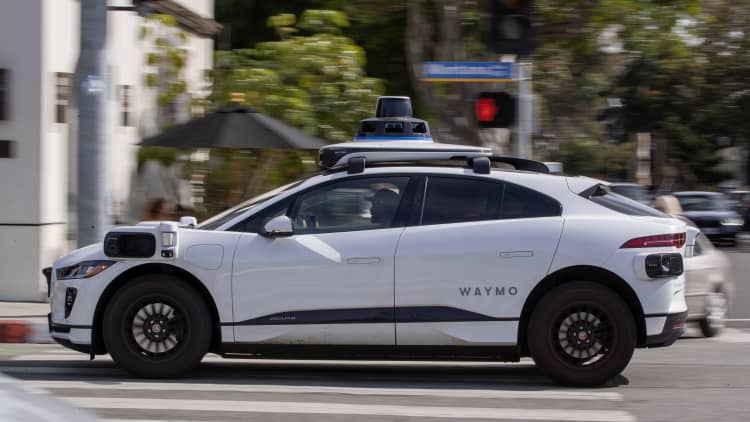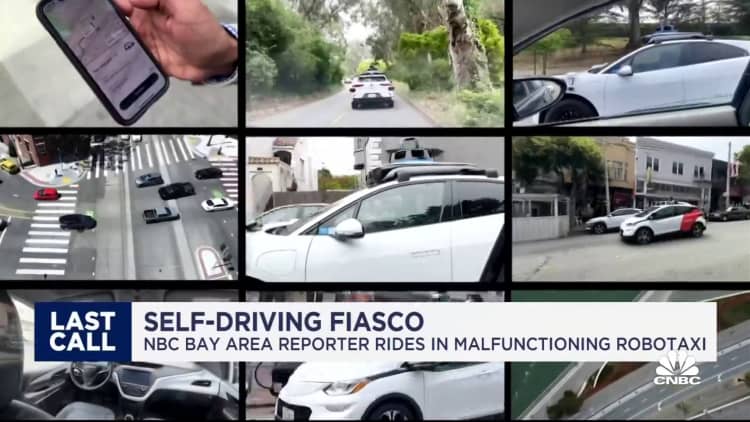

I signed up to try Waymo as soon as it became available in San Francisco, and this weekend Alphabet’s self-driving car company finally invited me to give it a shot.
My son Marlon has been obsessed with self-driving cars this year, as we’ve seen more and more Waymos and competing GM Cruise vehicles tootling around San Francisco without safety drivers. We thought we noticed them getting more aggressive in recent months — nothing frightening, but they seemed to be pulling into intersections and merging into lanes more assertively, just like a normal San Francisco driver would do.
Last month, Waymo and Cruise won approval to operate driverless cars in San Francisco at any time of day. So with self-driving cars a common feature of our local landscape, we were excited to give one a try.
Saturday morning, we headed down to the local drugstore to buy sunglasses, then used the Waymo app on my phone to order a ride home. It would be about a five-minute drive, but would save us a steep uphill walk.
The car pulled up with my initials, MR, on the display below the rotating lidar sensor on the roof. The door handles were flush with the side of the car until I selected the “unlock” option from the app, at which point they popped out like normal door handles.
We both climbed in. The A/C was blowing cool air. The interior was bathed in light pink light from the iPad-sized console at the front of the back seat, and soft ambient music was playing. It definitely had a “welcome to the future” vibe. A female recorded voice gave us some instructions to fasten our seatbelts and not touch the brakes or steering wheel, then it pulled into motion.
The car performed as if a competent human were driving. It didn’t hesitate to cross the (imaginary) center line when it had to get around a parked car on a narrow street, and stuck toward the middle on a very narrow section with cars on both sides. The ride was smooth and the speed constant at just under 25 miles per hour.
We fiddled with the interior console to try and connect it to my iPhone to play music from my library, but the ride was so short that I only had time to download the Google Assistant (required for that function) before it was over.
For some reason, the Waymo wouldn’t drive us right to our door. Our house is at the top of a very steep crest on a narrow street that has four buses running up and down it every hour, so maybe it was too much to handle. As it approached our drop-off point, the voice told us that we’d be ending our ride soon, and to touch the handle twice — once to unlock the door, a second time to open it. We did as instructed, walked out of the car, and it pulled slowly off.
The trip cost $8, about the same as a Lyft or Uber. As my son pointed out, Alphabet doesn’t have any drivers to pay, so the money all goes straight to the company as revenue.
The ride itself was completely uneventful. A little boring, even. The whole experience reminded me of the way smartphones or the internet were miraculous at first, but now seem mundane.
I was a skeptic about the promise of self-driving cars. It seemed like one of those technologies that’s been perpetually a few years away. But after taking this ride, I can absolutely see it becoming a very common way to get around for short urban trips, as long as Waymo and its competitors can scale up in a cost-effective way.
Consumers, investors and regulators better get ready, because the technology is here and it’s so advanced it seems natural and safe upon first use.
WATCH: NBC Bay Area reporter takes a ride in a malfunctioning robotaxi






